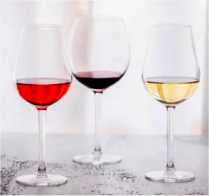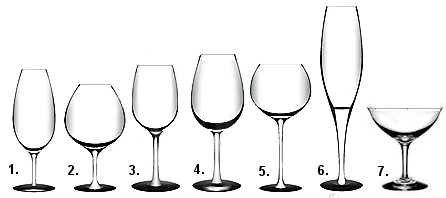|
The Feel-Good Guide to Sports, Travel, Shopping & Entertainment
|
||
| Main | Sports Events | Holidays & Observances | Pop Culture | Shopping | Travel |
|
Just keep in mind that wine glasses were not designed to merely impress your guests. That tall flute glass, for example, not only helps bubbles circulate in chilled champagne. Its slender stem also allows you to hold the glass without raising the champagne's temperature. More science is on the table -- when you consider the interaction of wine and room air. That's right, allowing a wine "to breathe" is not just wine lore. It actually mellows the flavor. As an example, bold red wines usually require a bit more 'elbow room' in a wider glass with a bigger bowl to help aerate and release its true character. To prove it, at your next wine tasting party pour a glass of red wine in a small glass, and another in a larger glass, and see the unique difference it makes in your mouth! While there is a lot of debate over what wine glass best suits a particular wine, these are the classic shapes that have become universally accepted for enjoying the flavor of wine to the fullest:
1. Port, 2. Brandy snifter 3. white wine, 4. red wine, 5. red burgundy,
How to Choose Wine Glasses - Get step-by-step instructions from WikiHow for presenting the proper glass along with related tips on cleaning and storage of wine glassware. Wine glass - Wikipedia overview with practical advice and information on their proper use, shape and manufacture with helpful photos, illustrations and related resources. |
 Not
sure about what wine goes in what glass?
Not
sure about what wine goes in what glass? 
